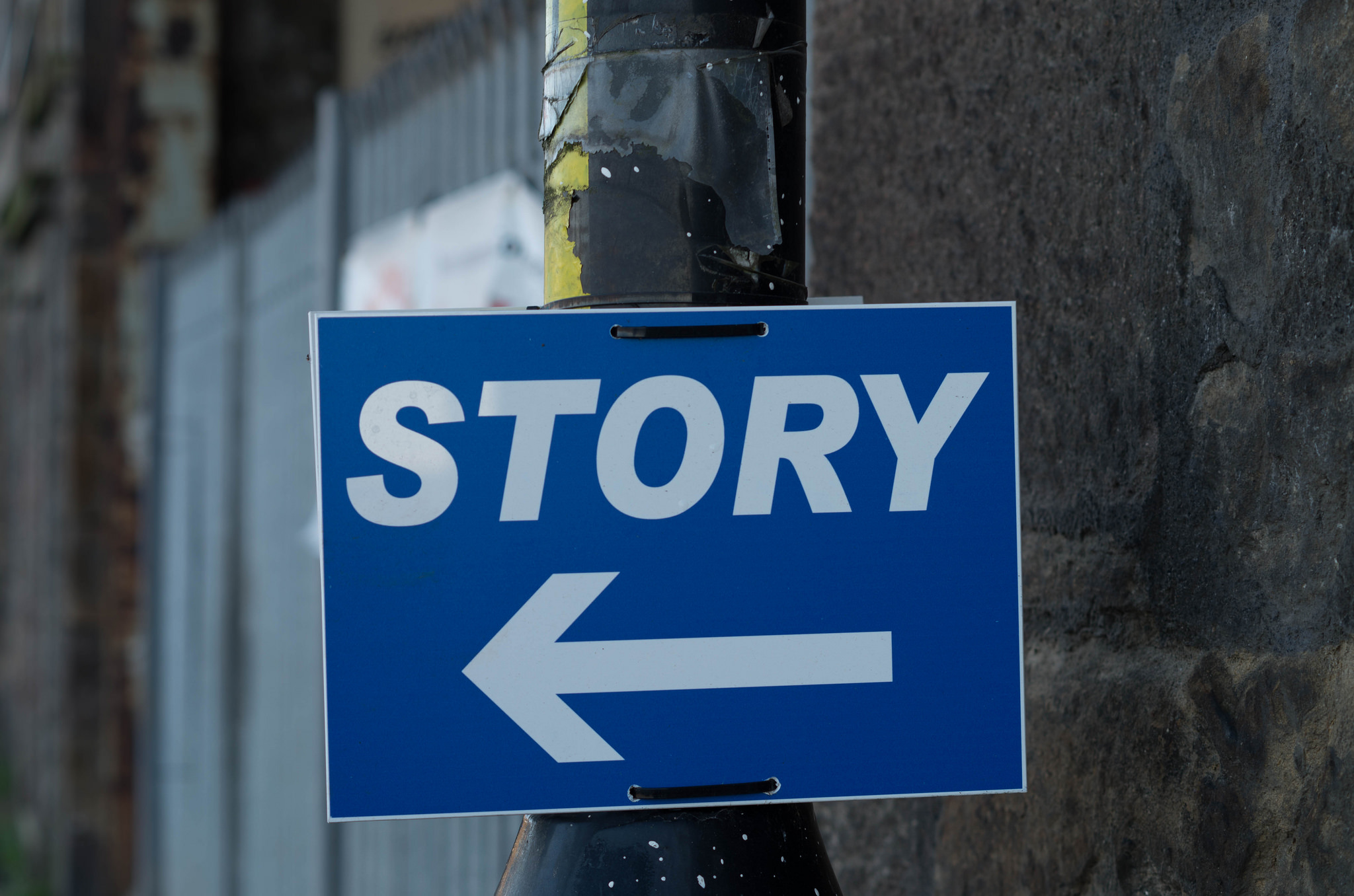
Turning a presentation into a meaningful story is every presenter’s greatest challenge.
Why is it important to tell a story?
That’s how we live and how we learn
We’ve been telling stories to each other since the beginning of time. There really is no more powerful a way of communicating and connecting with each other.
This post is designed to help you to create a presentation through the use of story
Most presentations today are designed to deliver information.
The most effective way of sharing knowledge or data with impact in a way that is memorable, is through telling stories.
All great stories elicit some form of imbalance or dissonance which gets resolved
This is always appealing to an audience.
We all like the tension, contrast, surprise and suspense of a good story well told.
A good story creates a sense of tension and frustration between the status quo versus the relief and positivity of what could be.
Every great novel and movie in history begins with the problem, challenge or status quo. It then takes us on a transformational journey to a new world.
Every good story has a beginning, middle and end
Begin your story by reminding the audience of exactly where they are today
Remind them what they are experiencing now before you even begin to paint a picture of new possibilities.
This immediately creates a level of resonance with the audience. It allows them to acknowledge the fact that you understand and relate to their current reality.
This not only creates recognition but also a rapport between you
They are more likely to listen to what you have to say next.
Now you introduce the paradox of discomfort with excitement, through sharing what could happen if they embrace your idea.
Many speakers have heard the term, ‘The Hero’s Journey’
It’s a phrase coined by the American writer, Joseph Campbell. It is a structure of storytelling constructed through 12 stages.
‘The Hero’s Journey’ is a fabulous story telling structure which has been around for decades.
It has been used to create some of the most memorable films we have seen
Star Wars, Indiana Jones, James Bond and even the latest Lord of the Rings and Harry Potter Movies have been based on ‘The Heroes Journey’.
Here it is simplified in 9 easy steps:
1. Set the scene
2. Introduce the characters (although not necessarily Step 2)
3. Begin the journey
4. Encounter the obstacle
5. Overcome the obstacle
6. Resolve the story
7. Make the point
8. Ask ‘The Question’
9. Repeat the point
The middle of the story
This involves a constant ‘tug of war’ between what things are like today and what they could be like in the future.
The end of the story
This should be much more than a call to action.
It should inspire action
In other words, your audience should feel moved to embrace your idea and get to work on it immediately.
This can only be achieved if you can show them what the future could look like for them and what the benefits would be.
Human beings are hard wired to listen and respond to stories
All compelling presentations take the form of a story as a journey.
Within that journey the emotional connection is achieved through individual relevant stories.
We each have many stories to tell.
We don’t have to search too hard for them, they can come from just about anywhere.
The best stories are the personal ones which come in all shapes and sizes:
Adversity
Change
Vision
Leadership
Courage
Belief
Hope
Vision
They could be about
Important or even turning points in our life
Experiences with other people
Important places and things that we love
Lessons we have learned from
How to tell a story
The best way to tell a story is to re-live it so that your audience can experience it for themselves.
Tell it with feeling and action as though you were back in the moment.
Your stories should fit within the context of your presentation and be relevant to the point you are trying.
Your audience must be able to easily relate to, and identify with it.
You must be comfortable telling them, they must be true and they should be short.
The power of metaphors
An extremely effective way of introducing stories to your presentation is through the use of metaphors.
Consider the impact of one of history’s most powerful speeches Martin Luther King Jr.’s ‘I have a dream’ speech.
I’ve highlighted below a handful of some of the metaphors he used to such great effec.
Over 250,000 people connected to his every word in Washington in 1963:
‘This momentous decree came as a great beacon light of hope to millions of Negro slaves who had been seared in the flames of withering injustice.’
‘One hundred years later, the Negro lives on a lonely island of poverty in the midst of a vast ocean of material prosperity.’
‘America has given the Negro people a bad check, a check that has come back marked “insufficient funds”.’
We remember great stories
Stories carry enormous power in helping us to bring our message and the conversation to life.
A great story well told is remembered and repeated
As you choose your stories carefully remember 2 things that can add significant impact to the way they are received and remembered.
A shocking or surprising fact, statement or statistic
If you have one that accompanies your story, don’t gloss over it, emphasise it.
Expressive visuals
Use expressive and evocative visuals to resonate with your audience. Help them to use their imagination and feel what you are saying.
If you’d like to turn your presentation into a story:
– Book yourself onto a powerful public speaking course.
– Invest in some really good one to one public speaking coaching.
– Get yourself some excellent presentation training
Image: Courtesy of flickr.com

Leave a comment
You must be logged in to post a comment.